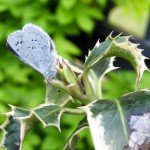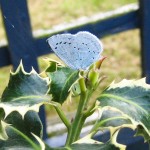So, the sun is finally making an appearance and warming the air (in my opinion a little too much at times), allowing the butterflies to come out without fear of drowning. It is high Summer, the buddlejia is flowering, the sky is sometimes blue and the garden is brought to life by the droning of bees (although reportedly fewer than in previous years) and the fluttering of delicate wings looking for some nectar producing plants on which to land.
Oh and the evil white butterflies that don’t stop long enough for me to take a picture, who are not looking for nectar. No, they are looking for my young cavolo nero that I am growing for the winter. They hunt round and round, stopping only briefly when they spot something in the brassica family that they can oviposit on (is that a verb – not sure?).
Many an allotment is covered in netting to keep these devil insects at bay, but, should I use these in the garden – not very pretty! I am resorting to regular checks of my plants. This is where I may have the advantage over the allotment holders, I only have eight plants, and so a regular check is not so time consuming. So far I have been evaded by two caterpillars who munched their way through the majority of two plants, but, in the main I have managed to remove most of the eggs. If this doesn’t work this year I may have to resort to a shotgun next year! I have included a couple of pictures below of the white butterfly that is out to get my brassicas (not the actual one, I have had to resort to a picture that I took the other year) and the reason they are so naughty.



